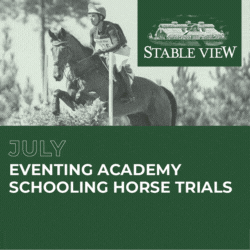Sue Smith recently brought us a three-part series on selecting your next OTTB (Read Parts One, Two, and Three), and she’s back with another article on common reasons why OTTBs are often overlooked when shopping at the track. Many thanks to Sue for sharing her insight, and thank you for reading.
Any professional athlete, whether two-legged or four-legged, knows that a certain amount of body soreness accompanies heavy exertion. It is not uncommon for a horse directly off the track to go through a period in which he may be reactive to the touch. Perhaps you will notice tail swishing, kicking or nipping while being groomed, or that your new horse may take short, tight strides rather than offering relaxed, fluid movement; each are ways that a horse may confess his body is uncomfortable.
For those horses who fall in the “sound, but sore” category, you may find a brief let down period could be beneficial for both a horse’s mental and physical well-being. A few weeks or months of rest may be a great start to your horse’s new career and save you time in the long run.
Rather than viewing this phase as a rider’s purgatory, use this time to develop a relationship with your new horse and as an evaluation of how he reacts to his environment. Personally, I use this time to build my horse’s “Life Skills Resume.”
I have a clear list in my head of tasks that I like all my horses to master, such as standing still at the mounting block, loading on the trailer, cross tying, not stepping on my toes, etc. You may find it helpful to take the time to sketch out a list of skills you would appreciate your horse being proficient in; reference it sporadically, crossing items off your list as your horse progresses. It will create an easy way to measure your progress and can also be a nice reminder of projects to work on when you want to shake up your training routine with your horse.
I think we’ve all experienced the “green horse’s first show” panic attack. You’ve picked a horse show date, and as it approaches you start to wonder, “Is he going to load?” “Will he be THAT horse who screams all day and gets the eye rolls from other riders?” “Will we survive the warm up ring?” “Heck, what if he won’t stand still long enough to get a foot in the stirrup?” “Will people notice that only one ear is clipped?”
A little preparation every day can make the difference between dreading your new prospect and having a horse everyone drools over. The great part is you can practice these skills before you even have your first ride so that when the time comes, you are confident in your horse and can actually enjoy the start of his show career.
Break down your tasks into smaller segments or quick sessions rather than wait until an imposing deadline to try and stuff in six months of work. For instance, as someone who almost always trailers by myself, loading and trailer safety is important to me.
Once my horse loads reliably, it’s common for me to load him and have him stand on the trailer while I clean stalls or ride another horse, let him practice standing in the trailer at home without distractions.
I also like to take greenies along to my other horses’ riding lessons; I may or may not unload him. Regardless, it is good practice loading, trailering and standing in the trailer while his buddy is ridden (not an easy task).
If there is time, I may unload horse #2 and walk him around the farm, make it a positive experience and very low key. If you want your horse to act like trailering is just another day at the office, you need to make it as if it is part of his daily routine.
Example of Possible Life Skills List:
Ground manners (please do not maim me)
Stand tied
Stand in cross ties
Stand for vet/farrier
Stand tied in horse trailer
Stand tied outside horse trailer
Stand for mounting
Just stand, damn it!
Learn to lower head for bridling (I am elf size)
How to be vacuumed
How to be clipped
How to be lunged, long-lined, lunged over cavaletti, etc.
How to be ponied from another horse
How to load on the horse trailer
How to be calmly transported in the trailer alone and with company
How to be calm and confident at horse shows, etc.
How to go through water
Verbal commands (walk/trot/canter/WHOA)
The above are just some suggestions to develop a horse that you enjoy being around, who is safe to handle and well-adjusted to the sport or pleasure world. These are skills that also make your horse more marketable, which is one of the best things you can do for your horse — mold him into a partner everyone wants.
If you do decide to give your horse a let down period, remember it is exactly what you make of it. The retraining process is not specific only to the riding aspect; groundwork and daily handling is interconnected.
Many of the same principles we use in the tack — going forward, moving laterally, halting, yielding, waiting, etc., are concepts that can be introduced and should be reinforced in many different ways. Take advantage of every opportunity to work with your new horse, and you may find yourself ahead of the game when he is ready to begin his under saddle training.




















